Today Current Affairs: 4th August 2022 for UPSC IAS exams, State PSC exams, SSC CGL, State SSC, RRB, Railways, Banking Exam & IBPS, etc
Table of Contents
India’s ‘Neighborhood First’ Policy:
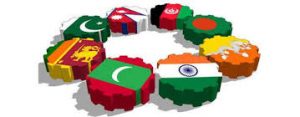
Indian External Affairs Minister met with Maldives President stating that India’s ‘Neighborhood First’ policy and the Maldives’ ‘India First’ policy complement each other, advancing the special partnership.
- Under its ‘Neighbourhood First’ policy, India is committed to developing friendly and mutually beneficial relations with all its neighbours.
- India is an active development partner and is involved in several projects in these countries.
- India’s policy of ‘Neighbourhood First’ focuses on creating mutually beneficial, people-oriented, regional frameworks for stability and prosperity.
- India’s engagement with these countries is based on a consultative, non-reciprocal and outcome-oriented approach, which focuses on delivering benefits like greater connectivity, improved infrastructure, stronger development cooperation in various sectors, security and broader people-to-people contacts.
Purpose:
- India has entered into MoU (Memorandum of Understanding) with members of the South Asian Association for Regional Cooperation (SAARC).
- These agreements ensure a free flow of resources, energy, goods, labour, and information across borders.
- Priority is to improve the relations with immediate neighbours as peace and tranquillity in South Asia is essential for realising development agenda.
- It focuses on vigorous regional diplomacy by engaging with neighbouring nations and building political connectivity through dialogue.
- Economic Cooperation:
- It focuses on enhancing trade ties with neighbours.
- India has participated and invested in SAARC as a vehicle for development in the region.
- One such example is the Bangladesh-Bhutan-India-Nepal (BBIN) grouping for energy development i.e. motor vehicles, waterpower management and inter-grid connectivity.
- Disaster Management:
- The policy also focuses on cooperating on disaster response, resource management, weather forecasting and communication and also capabilities and expertise in disaster management for all South Asian citizens.
- Military and Defence Cooperation:
- India is also focusing on deepening security in the region through military cooperation by conducting as well as participating in various defence exercises.
Wild Life (Protection) Amendment Bill, 2021:

The Lok Sabha passed the Wild Life (Protection) Amendment Bill, 2021
- The Bill amends the Wild Life (Protection) Act, 1972. The Act regulates the protection of wild animals, birds and plants.
- The Bill seeks to increase the number of species protected under the law, and implement the Convention on International Trade in Endangered Species of Wild Fauna and Flora (CITES).
- Currently, the Act has six schedules for specially protected plants (one), specially protected animals (four), and vermin species (one).
- The Bill reduces the total number of schedules to four.
- The Bills empowers the central government to regulate or prohibit the import, trade, possession or proliferation of invasive alien species.
Financial Inclusion Index: RBI
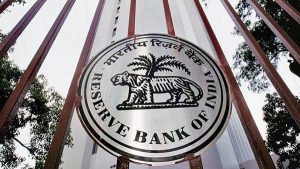
The Reserve Bank of India has released the Composite Financial Inclusion Index (FI-Index) for the year ended 31st March 2022.
- India’s Financial Inclusion Index has improved to 56.4 from 53.9 in the previous year 2021.
- The improvement has been seen across all its sub-indices (Access, Usage and Equality).
Financial Inclusion Index:
- It is a comprehensive index incorporating details of banking, investments, insurance, postal as well as the pension sector in consultation with the government and respective sectoral regulators.
- It was developed by the RBI in 2021, without any ‘base year’, and is published in July every year.
- Aim:
- To capture the extent of Financial Inclusion across the country.
- The FI-Index is responsive to ease of access, availability and usage of services and quality of services, consisting of 97 indicators.
- Parameters:
-
- It captures information on various aspects of financial inclusion in a single value ranging between 0 and 100, where 0 represents complete financial exclusion and 100 indicates full financial inclusion.
- It comprises three broad parameters (weights indicated in brackets) viz., Access (35%), Usage (45%), and Quality (20%) with each of these consisting of various dimensions, which are computed based on a number of indicators.
- The index is responsive to ease of access, availability and usage of services, and quality of services for all 97 indicators.
Restoring Coastal Habitats:

A study has been published, which has raised doubt about the efficiency of restoring coastal habitats to offset carbon emissions.
- Restoring Coastal habitats is far from certain and unreliable. and there’s a real risk that the scale at which they can mitigate emissions has been massively oversold.
- It is extremely difficult to work out a reliable figure for carbon accumulation by coastal ecosystems under current conditions.
- There is a very weak basis for calculating the future carbon offsets that restoration projects might provide over the next 50 to 100 years.
- Blue Carbon refers to carbon sinks held by coastal, aquatic, and marine vegetation, marine organisms, and sediments.
- Across several hundred scientific studies, there was a 600-fold difference between the highest and lowest estimates for carbon burial in salt marshes, a 76-fold difference for seagrasses and a 19-fold difference for mangroves.
- Burrowing organisms disturb and mix younger and older layers, causing errors in the dating process of fossis fuels by making sediments seem younger, and carbon burial rates greater, than they really are.
- Carbon dating is a radiometric dating method.
- It uses the naturally occurring radioisotope carbon-14 (14C) to estimate the age of carbon-bearing materials up to about 58,000 to 62,000 years old.
- Much of the carbon buried in coastal sediments comes from elsewhere, such as soil swept from the land and carried by rivers. This is called Imported Carbon.
- In a study on one saltmarsh, the proportion of 50% imported carbon near the sediment surface increased to 80% in deeper layers.
- Since the deeper value represents the habitat’s long-term carbon burial rate, the direct contribution of a restored habitat to removing carbon may be much less important than thought.
- Turning an oil palm plantation back into a mangrove forest or flooding a coastal area to make a saltmarsh should help the land accumulate carbon.
- But that same land could also release more methane (otherwise known as marsh gas) and nitrous oxide – both powerful greenhouse gases – leaving no net climate benefit.
- There are calcifying animals and plants which grow in these habitats, particularly seagrass meadows.
- The strap-like leaves of seagrass are often covered by a white crust of shelled worms and coralline algae.
- When these organisms make their calcium carbonate covering, CO₂ is produced.
4th Oil And Natural Gas Corporation (ONGC) Para Games:

The Government of India inaugurated the 4th Oil and Natural Gas Corporation (ONGC) Para Games in New Delhi.
- ONGC Para Games is a special Human Resource Initiative to provide Equal Opportunities to Persons with Disabilities PwDs in all walks of corporate life.
- The intent is to contribute in the holistic development of the Human Resources of the public enterprises, who are our most valuable asset, in the pursuit of Energy.
- Employees of eight central oil and gas public enterprises are participating in the 4th ONGC Para Games, being organized by Oil and Natural Gas Corporation Limited (ONGC) during 2-4 August 2022.
- ONGC organizes the Para Games in an international format from its very first edition in 2017 with the help of the Paralympic Committee of India, where 120 ONGC PwD employees participated in games like athletics, badminton, table tennis and wheelchair race.
ONGC:
- ONGC is a public sector petroleum company.
- Under the leadership of Pandit Jawaharlal Nehru, the foundation stone of ONGC was laid in 1955 as the Oil and Gas Division under the Geological Survey of India.
- It may be noted that on 14th August 1956, it was renamed as the Oil and Natural Gas Commission and in 1994 the Oil and Natural Gas Commission was converted into a corporation.
- In the year 1997 it was accepted as one of the Navaratnas by the Government of India, while in the year 2010 it was given the status of Maharatna.
National AYUSH Mission:

Under the Centrally Sponsored Scheme of the National AYUSH Mission, the total budget of 3119.46 crores has been allocated/ released as a central share to States/UTs since the inception of the scheme and they have reported an expenditure of Rs. 2290.20 crores.
- The government of India has adopted a strategy of Co-location of AYUSH facilities at Primary Health Centers (PHCs), Community Health Centers (CHCs) and District Hospitals (DHs), thus enabling the choice the patients for different systems of medicines under a single window.
- The engagement of AYUSH doctors/ paramedics and their training is supported by the Ministry of Health & Family Welfare under National Health Mission (NHM), while the support for AYUSH infrastructure, equipment/ furniture and medicines are provided by the Ministry of Ayush under National AYUSH Mission (NAM)as shared responsibilities
- AYUSH educational institutions come under the purview of respective State/UT Governments.
- However, under NAM, as per the proposals received from State Governments through State Annual Action Plans (SAAPs), they have been supported for setting up 9 new AYUSH Educational Institutions since the scheme’s inception.
National Ayush Mission:
- Launched in September 2014 by the Department of AYUSH under the Ministry of Health and Family Welfare, during the 12th Plan for implementation through States/UTs.
- Now, it is implemented by the Ministry of Ayush.
- The scheme involves expansion of the AYUSH sector to promote holistic health of Indians.
- The Mission addresses the gaps in health services through supporting the efforts of State/UT Governments for providing AYUSH health services/education in the country, particularly in vulnerable and far-flung areas.
Exercise Pitch Black:

Indian Force will join 16 other nations later this month for Exercise Pitch Black, hosted by the Australian Air Force.
- It’s a biennial exercise to enhance interoperability and strengthen relationships among participants.
- It will provide Indian Air Force a unique opportunity to exchange knowledge and experience with these nations in a dynamic warfare environment.
- It provides all nations’ personnel with experience in working with aircraft, systems, and work practices, in northern Australia’s unique environment, that would otherwise be unfamiliar.
- It will take place in the Southern hemisphere which is hosted by the Royal Australian Air Force (RAAF).
- The participants nations this year are Australia, Canada, France, Germany, Indonesia, India, Japan, Malaysia, Netherlands, New Zealand, the Philippines, South Korea, Singapore, Thailand, UAE, the U.K, and the U.S.
100% Quota To Locals:
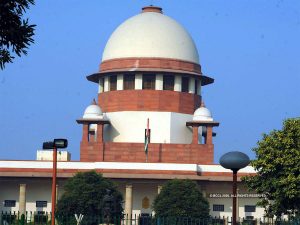
SC Quashes Jharkhand Decision to Grant 100% Quota to Locals in Govt Jobs
- Observation by SC “‘The citizens have equal rights, and the total exclusion of others by creating an opportunity for one class is not contemplated by the founding fathers of the Constitution of India”
- Jharkhand Government in 2016 granted 100% reservations to locals of 13 scheduled areas in public jobs. Previously State HC had termed the decision discriminatory and impermissible.
- The move is unconstitutional and ultra vires Articles 14, 16(2), 16(3) and 35 of the Constitution of India.
- For reservation outer limit is 50% as specified in the Indra Sawhney case, 1992.
- The top court relied on the constitution bench judgment of 2020 related to a 100% quota in jobs in Andhra Pradesh.
- The power of the Governor does not supersede the fundamental rights guaranteed under Part III of the Constitution.
Hellfire R9X Missile:

The US military used its ‘secret weapon’ — the Hellfire R9X missile (‘Ninja missile’)– to kill Al Qaeda chief Ayman al-Zawahiri on the balcony of a safe house in Kabul.
- The Hellfire R9X is a US-origin missile known to cause minimum collateral damage while engaging individual targets.
- It weighs about 45 kg and the missile can also be launched from helicopters, aircraft and Humvees.
- The range of these missiles varies from 500 metres to 11 km.
- Hellfire means Heliborne, Laser, Fire and Forget Missile
- Al-Zawahiri, an Egyptian surgeon who had a $25 million bounty on his head, had helped coordinate September 11, 2001, attacks that had killed nearly 3,000 people.
Nagar Van Yojana:
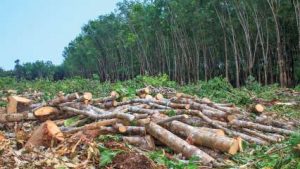
The Yojana was discussed in Parliament
- Aim: To create 400 Urban Forest and 200 Nagar Vatikas in at least 20 hectares of land in the urban areas in the next five years (2020-2025) (on existing forest land or any other vacant land by Urban local bodies)
- About: Launched in 2020
- Van will be maintained by State Government
- Funding: CAMPA Fund (under Compensatory Afforestation Fund Act 2016)
- Minister of State for Environment, Forest & Climate Change
- Warje Urban Forest in Pune (Maharashtra)will be considered a role model for the Scheme.
Astrobee : NASA’s New Free-Flying Robotic System
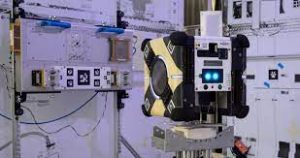
Astrobee is NASA’s new free-flying robotic system.
- Astrobee also consists of a system that serves as a research platform that can be outfitted and programmed to conduct microgravity experiments.
- The three free-flying robots are named Honey, Queen, and Bumble.
- The robots are shaped like cubes 12.5 inches wide.
- The Astrobee system consists of three cube-shaped robots, some software and a docking charging station used for recharging. They are about 32 centimetres wide.
- The three robots propel themselves using electric fans that allow them to fly through the microgravity environment of the International Space Station.
- The Astrobee robots are built on the knowledge acquired from operating SPHERES (Synchronised Position Hold, Engage, Reorient, Experimental Satellite) robots which have been operating on the International Space Station for over a decade.




